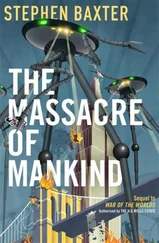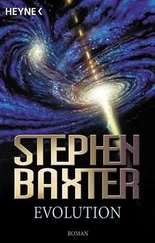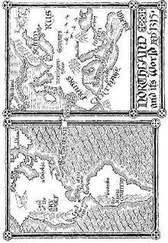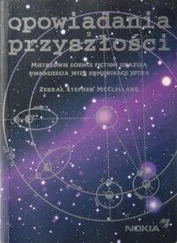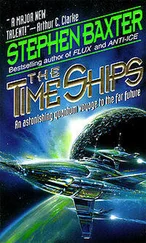In two more areas the science is too patchy even for the boundaries to be established: aerosol loading , the injection of soot, sulphates and other particles into the air through industrial processes and burning, and chemical pollution , where we have a handle on the impact of some pollutants such as DDT but the effect of others is unknown.
At least there is still time for recovery on all the dimensions. And there is actually some good news! The last dimension is ozone depletion : one environmental issue with a (relatively) happy ending.
In 1982 British scientists discovered a thinning of the ozone layer in the stratosphere over the Antarctic. This reactive form of oxygen screens Earth’s surface from the sun’s invisible but lethal ultraviolet radiation. Chemist Paul Crutzen and others confirmed that the culprit was CFCs, chlorofluorocarbon compounds. CFCs were used in spray cans, refrigerators and Styrofoam. Once released into the air, CFCs were broken up by sunlight and released free chlorine that reacted with ozone, thus removing that isotope of oxygen from the stratospheric layer where it collects. Life on Earth has evolved under the shield of the ozone layer, and has no natural protection against the sun’s ultraviolet. If the ozone layer had collapsed completely, allowing the world to be blasted by solar radiation, humans would have been afflicted by skin cancers and cataracts, and whole ecosystems would have been damaged.
However, the danger was recognised in time. In 1987 a protocol banning the release of CFCs was signed, the ozone depletion was halted, and Crutzen and others shared a Nobel Prize. At least this example shows that we are capable of concerted action on a global scale to avert the threats we face.
But—as seems to be the case in the Avatar future—what if we fail? How bad could it get?
Jake Sully’s Earth is a world where, he says, there is no green—where, we have to infer, the natural order has entirely broken down. Is this possible? And could humanity even survive on such a world?
As we face a bottleneck of resource depletion and environmental collapse, it’s not hard to imagine a nightmarish future of warfare and famine, social collapse, disease and mass migration, punctuated by climate catastrophes like drought, flood, and hurricanes spinning off the warming oceans. Richer countries or groups of countries may become fortified blocs. As always, the poorest will be most vulnerable, for they live close to the limit of sustainability anyhow. But none of us would be immune.
And things could get a whole lot worse than that.
Climate change could stop being gradual. Some scientists predict that if the world’s natural cycles are pushed too far we could reach a “tipping point” into a sudden, much greater disaster. Among the tipping-point triggers could be the abrupt release of deposits of methane and carbon dioxide, currently trapped under permafrost layers around the rim of the Arctic Ocean and elsewhere. These vast volumes of greenhouse gases would make global warming suddenly accelerate.
Another much-discussed tipping point is the possible collapse of the ocean current known as the Gulf Stream, which brings warm water (and air) to the north Atlantic. If this were to fail, coastal regions, including the east coast U.S., Britain and Scandinavia, could suffer a dramatic and sudden cooling . This scenario was (over) dramatised in the movie The Day After Tomorrow (2004). And it may have happened in the real world, triggering the “Younger Dryas” episode beginning around thirteen thousand years ago, in which the world’s emergence from the last Ice Age was interrupted by a thousand-year reversion back to glacial conditions.
A 2003 report commissioned by the Pentagon imagined sudden climate collapse triggered by something like the Younger Dryas. The consequence would be a sharp reduction in the world’s “carrying capacity,” its ability to feed us all. Amid the subsequent wars, droughts and huge population movements there would be a collapse of states and federations like the European Union, and a breakdown of international order. This was an extreme scenario, but then it’s the job of defence departments like the Pentagon to dream up and prepare for the worst case.
The very bleakest future predictions of all make grim reading. In the 1970s James Lovelock devised the famous theory of “Gaia,” our world seen as a network of flows of energy and matter, “a dynamic physiological system that has kept our planet fit for life for more than three billion years” (and perhaps Gaia has a parallel in Pandora’s Eywa; see Chapter 29). Now, Lovelock says in his latest book The Revenge of Gaia , “The world is fighting back… The bell has started tolling to mark our ending… Only a handful of the teeming billions now alive will survive.”
Is there anything we can do about this?
For a start we might go beyond the “green” activities already prevalent in the modern world: recycling, saving energy, conserving the remaining wild.
Perhaps we could rescue threatened portions of the biosphere itself. There are already over a thousand gene banks around the world, storing millions of plant seeds. Animals are being “stored” as frozen tissue samples, for example at the Frozen Zoo at San Diego Zoo in California, in the hope that if all else fails these creatures could be revived as clones some day. The Zoological Society of London is even considering a bank of frozen corals. And some scientists are considering how to preserve ecosystems on a larger scale—whole landscapes, perhaps—in order to allow evolution a large enough arena in which to continue.
But there are gentler possibilities. American environmentalist Paul Wapner argues that we should soften the lines between “us” and “nature.” For example, Wapner suggests, instead of building a fence to divide forest from city, we should create zones of selective logging. Forests would gradually shade into suburbs that would be intentionally wildlife-friendly, and there would be migration corridors for wildlife and plenty of exposed ground. There might be no wilderness, but the suburbs would be wilder, and we would all become wardens of the wild things around us. Ecologist Dickson Despommier has another interesting proposal: we should raise crops and animals in the cities, in “vertical farms,” large high-rise buildings. Then we could afford to allow the countryside to return to the wild—and we would drastically cut the cost of transporting food.
But if the situation continues to deteriorate, such small-scale initiatives might not be enough. We can imagine frantic efforts to put Gaia back together again on a much larger scale. This is geoengineering: rebuilding the Earth.
Geoengineering solutions can be vast in scale, but are generally based on two simple principles. Earth intercepts heat from the sun; and an excess of carbon dioxide in the air traps that heat. So to reduce the retained heat you either reduce the amount of solar energy the planet soaks up in the first place, by reflecting it away—“albedo manipulation”—or you take carbon dioxide out of the air—“carbon sequestration.”
One sequestration method is to liquefy atmospheric carbon dioxide and pump it under pressure into deep rock layers, or into the deep sea. (It was in 1970s studies of solutions like this that the term “geoengineering” was first coined.) This is already being done, for instance at natural gas plants in Norway. The challenge is not to generate more heat in the process than you’re saving by removing the carbon dioxide.
On the other hand the most ambitious albedo-manipulation schemes are to assemble immense solar reflectors in space. In 1929 the German-Hungarian space visionary Hermann Oberth suggested using huge orbiting mirrors to reflect sunlight to the polar regions, to alleviate the Arctic night. The Russians actually tested a twenty-metre space mirror in 1993, unfolded in Earth orbit from the Mir space station. The idea of using space mirrors to deflect light from an overheating Earth has been explored by American energy analysts. There are less dramatic schemes, such as using naval guns to fire aerosol particles into the high atmosphere, and thus to screen out the sunlight. Other possibilities have been explored in science fiction. Kim Stanley Robinson’s Forty Signs of Rain and its sequels (from 2004) dramatised the collapse and artificial restarting of the Gulf Stream, and in my own Transcendent (2005) I had engineers stabilise the methane deposits at the poles.
Читать дальше

